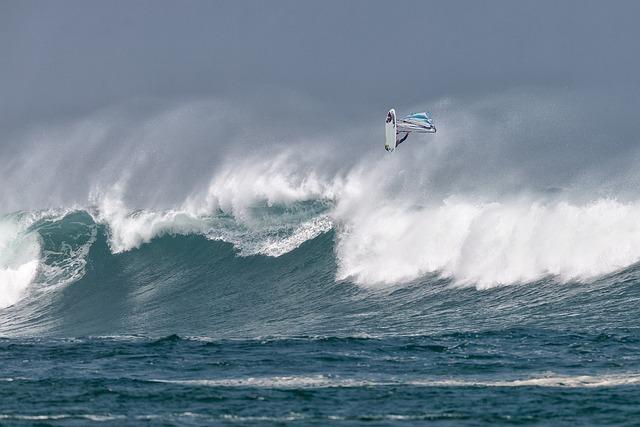Hey there, coffee lovers! ☕️ Are you ready to level up your java knowledge? Whether you’re a casual sipper or a devoted bean aficionado, there’s a whole world of coffee beans out there just waiting to be explored.From the smooth and mellow notes of Arabica to the bold and robust flavors of Robusta, each type of coffee bean has its own unique personality and story. So, grab your favorite mug, settle into your comfy chair, and let’s take a fun and flavorful journey through the different types of coffee beans.Who knows,by the end of this read,you might just find your new favorite brew or impress your friends with your newfound bean expertise. Let’s dive in and get brewing!
Unpacking the Bean Basics – Your Guide to Coffee Types
When it comes to coffee, the variety of beans available is mind-boggling! The two most popular types you’ll encounter are Arabica and Robusta.Arabica beans are known for their smooth taste and aromatic qualities, making them the go-to choice for coffee connoisseurs. They thrive at high altitudes and are frequently enough processed with care to bring out their flavor notes, ranging from sweet caramel to fruity. in contrast, Robusta beans pack a punch with their bold, earthy taste and higher caffeine content, which makes them a favorite for espresso lovers. they’re hardier plants, frequently enough grown at lower altitudes, and have a slightly bitter flavor that adds depth to your brew.
But wait, there’s more! Within these categories, you’ll find various subtypes, each offering unique flavors. For instance, under the Arabica umbrella, you have ethiopian Yirgacheffe known for its floral notes and radiant acidity, and Colombian Supremo, celebrated for its balance and sweetness. Robusta also has its engaging varieties, such as Vietnamese Robusta, which is stronger and more intense, often used in premium espressos. Check out the table below for a swift rundown of some popular coffee bean types:
| Type | Taste Profile | Best For |
|---|---|---|
| Arabica | Smooth, sweet, aromatic | Filter coffee, pour-over |
| Robusta | Bold, earthy, bitter | Espresso, strong brews |
| Libica | Floral, fruity | specialty blends |
| Excelsa | Dark, mysterious, fruity | unique blends |

From Arabica to Robusta – What’s the Buzz?
Coffee lovers often find themselves caught in the age-old debate between Arabica and Robusta beans. Each type has its unique characteristics that cater to different palates and preferences. Arabica, known for its smooth and delicate flavor profile, typically boasts higher acidity and sweeter notes, making it a favorite among specialty coffee enthusiasts. In contrast, Robusta is renowned for its bold, bitter taste and higher caffeine content, providing an earthy kick that many coffee drinkers adore. This dichotomy not only affects the taste but also influences the brewing methods, with Arabica often enjoying a slow pour-over and Robusta thriving in espresso machines.
So, what makes these beans so distinct? Hear’s a quick rundown of their standout features:
- Arabica: Less caffeinated, more acidic, with flavors ranging from fruity to nutty.
- Robusta: Higher caffeine, robust flavors, frequently enough described as woody or nutty.
- Growing Conditions: Arabica thrives at higher altitudes, while Robusta is more resilient and can grow in diverse conditions.
- Price Point: Arabica typically commands a higher price due to its unique flavor and more demanding cultivation process.
For a clearer comparison,check out the table below:
| Feature | Arabica | Robusta |
|---|---|---|
| Caffeine Content | Low | High |
| flavor Profile | Smooth,Fruity,Nutty | Bitter,Earthy,Woody |
| Price | Higher | Lower |
| Growing Altitude | 600-2,000 m | Sea level to 600 m |

The Flavor Profiles – Discovering What Each Bean Brings to the Table
Coffee beans come in a delightful variety, each lending its unique flavor profile to the cup.Let’s start with Arabica, the diva of the coffee world, known for its smooth and refined taste. With a hint of sweetness, this bean often boasts notes of fruit, sugar, and floral accents, making it a favorite among coffee enthusiasts. On the contrasting side, we have Robusta. Bursting with a bolder flavor, Robusta is often described as earthy, nutty, and much harsher, with a higher caffeine content. This makes it a go-to for espresso lovers who want that strong kick to jumpstart their day.
Next up are the Liberica and Excelsa beans, which bring intriguing nuances to the table. Liberica, often overlooked, has a unique aroma, often compared to wood and floral notes, offering a distinct taste that some describe as fruity and smoky. excelsa, while a variety of Liberica, stands out with its tart and fruity flavor, reminiscent of dark berries and chocolate—a hidden gem for adventurous palates. To help you navigate these flavors,check out the table below for a quick snapshot of what each bean can bring to your brew:
| Bean Type | Flavor Profile | Aroma |
|---|---|---|
| Arabica | Smooth,Sweet,Fruity | Floral,Light |
| Robusta | Bitter,Earthy,Bold | Nutty,Strong |
| Liberica | Fruity,Smoky,Unique | woody,Floral |
| Excelsa | Tart,Fruity,Chocolatey | Berry-like,Exotic |
Brewing Techniques – How to Make the Most of Your Beans
To unlock the full potential of your beans,it’s essential to embrace various brewing techniques that can elevate your coffee experience. One popular method is the pour-over, which allows for precise control over water temperature and flow rate. This technique brings out the delicate flavors in light roasts, making every sip a delightful journey. If you’re in the mood for something robust, consider the French press. This method involves steeping the coffee grounds in hot water before pressing down a metal or plastic plunger, resulting in a strong, full-bodied brew that beautifully captures the rich oils of dark roasts.
Another innovative technique is the cold brew method. By steeping coffee grounds in cold water for an extended period, typically 12 to 24 hours, you’ll achieve a smooth, less acidic coffee that’s perfect for hot summer days. Don’t forget about the AeroPress, which has gained popularity for its versatility and ability to create espresso-like coffee.It employs air pressure to push hot water through the coffee grounds, producing a concentrated shot that coffee enthusiasts adore. Here’s a quick reference table to help you decide the best brewing technique for your favorite bean type:
| Brewing Method | Best For | Flavor Profile |
|---|---|---|
| Pour-Over | Light Roasts | Crisp and Vibrant |
| French Press | Dark Roasts | Full-Bodied and Bold |
| Cold Brew | Any Roast | Smooth and Mild |
| AeroPress | Espresso-style | rich and Concentrated |
Q&A
Java Jargon: Exploring the Different Types of Coffee Beans!
Q1: What are the main types of coffee beans?
A1: The two most common types of coffee beans are Arabica and Robusta. Arabica beans are known for their smooth flavor and aromatic qualities, making them a favorite among coffee aficionados. On the flip side, Robusta beans pack a stronger punch with higher caffeine content and a more bitter taste. There are also some lesser-known types, like Liberica and Excelsa, which add unique flavors to the mix!
Q2: What’s the difference between arabica and Robusta?
A2: Great question! Arabica beans typically grow at higher altitudes and require specific conditions to thrive, which is why they’re often pricier. They have a sweeter, more complex flavor profile with tones of sugar, fruit, and berries. Robusta beans, though, are hardier and can withstand harsher environments. They tend to have a more bitter and earthy taste, with noticeable hints of chocolate and nuts.
Q3: What’s the deal with Liberica and Excelsa?
A3: Liberica and excelsa are like the quirky cousins at the coffee family reunion. Liberica has a floral, fruity aroma and a woody flavor that can be polarizing—some love it, others, not so much. Excelsa, on the other hand, is frequently enough used in blends to add depth.It has a unique tartness and is known for its fruity, dark flavors that can be reminiscent of dark berries.
Q4: How do I choose the right coffee bean for me?
A4: The best way to find your perfect bean match is to try a variety! If you enjoy milder, aromatic coffees, start with Arabica. If you like your coffee strong and bold,Robusta could be your jam. For those adventurous souls, seek out blends that include Liberica or Excelsa.Plus, visit your local coffee shop and ask for recommendations—they love geeking out about beans!
Q5: what’s the best brewing method for each type of bean?
A5: Different beans shine with different brewing methods. Arabica is often best brewed with pour-over or French press to highlight its nuanced flavors. Robusta, with its strong profile, works well with espresso or drip brewing to max out that caffeine kick. As for Liberica and Excelsa, they can be fun to experiment with—try a cold brew for liberica or a French press for Excelsa to bring out their unique characteristics!
Q6: Can the origin of coffee beans really make a difference in taste?
A6: Absolutely! The origin plays a huge role in the flavor profile of coffee. Beans from Kenya might be bright and fruity,while those from Brazil can be nutty and chocolatey.This phenomenon is known as “terroir,” which is just a fancy way of saying that the local climate, soil, and farming practices effect the beans. So, your morning cup of joe could take you on a global flavor tour!
Q7: any fun facts about coffee beans?
A7: Oh, you bet! did you know that coffee beans aren’t beans at all? They’re actually seeds inside the fruit of the coffee cherry! Also, coffee is the second most traded commodity in the world after oil, which is pretty mind-blowing. And here’s a fun one: some coffee aficionados argue that the best coffee in the world comes from beans that have been digested and excreted by animals. Yup, that’s right—civet coffee is a thing!
Q8: How can I store my coffee beans to keep them fresh?
A8: you’ll want to treat your beans like royalty! Store them in an airtight container away from light, moisture, and heat. A cool, dark pantry is perfect. And if you can, buy whole beans and grind them right before brewing to get the freshest flavors in your cup. Your taste buds will thank you!
And there you have it! Now you’re well-equipped to dive into the marvelous world of coffee beans. Get brewing and let your coffee journey begin—cheers! ☕
In Conclusion
And there you have it, coffee lovers! We’ve journeyed through the aromatic world of Java, exploring the delightful nuances of different coffee beans—from the bright and fruity flavors of Ethiopian Yirgacheffe to the rich, chocolatey notes found in a good old Colombian brew.Whether you’re a seasoned barista or just someone who kicks off their morning with a cup of Joe, understanding the types of coffee beans can elevate your morning ritual to new heights.So, next time you find yourself in a café or perusing the coffee aisle at the store, you’ll be armed with all this fun coffee jargon. Impress your friends, spice up your coffee conversations, and hey, maybe even discover a new favorite bean along the way!
Remember, each cup of coffee tells a story—so go ahead, sip your brew, and savor the tales of the beans.Until next time, keep brewing, keep exploring, and let the coffee adventures continue! Cheers! ☕️✨






